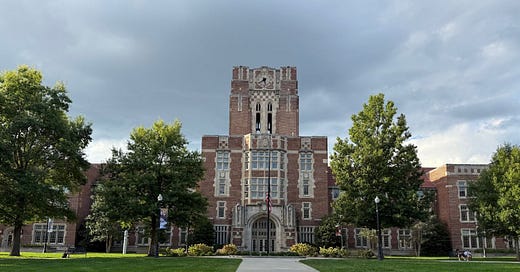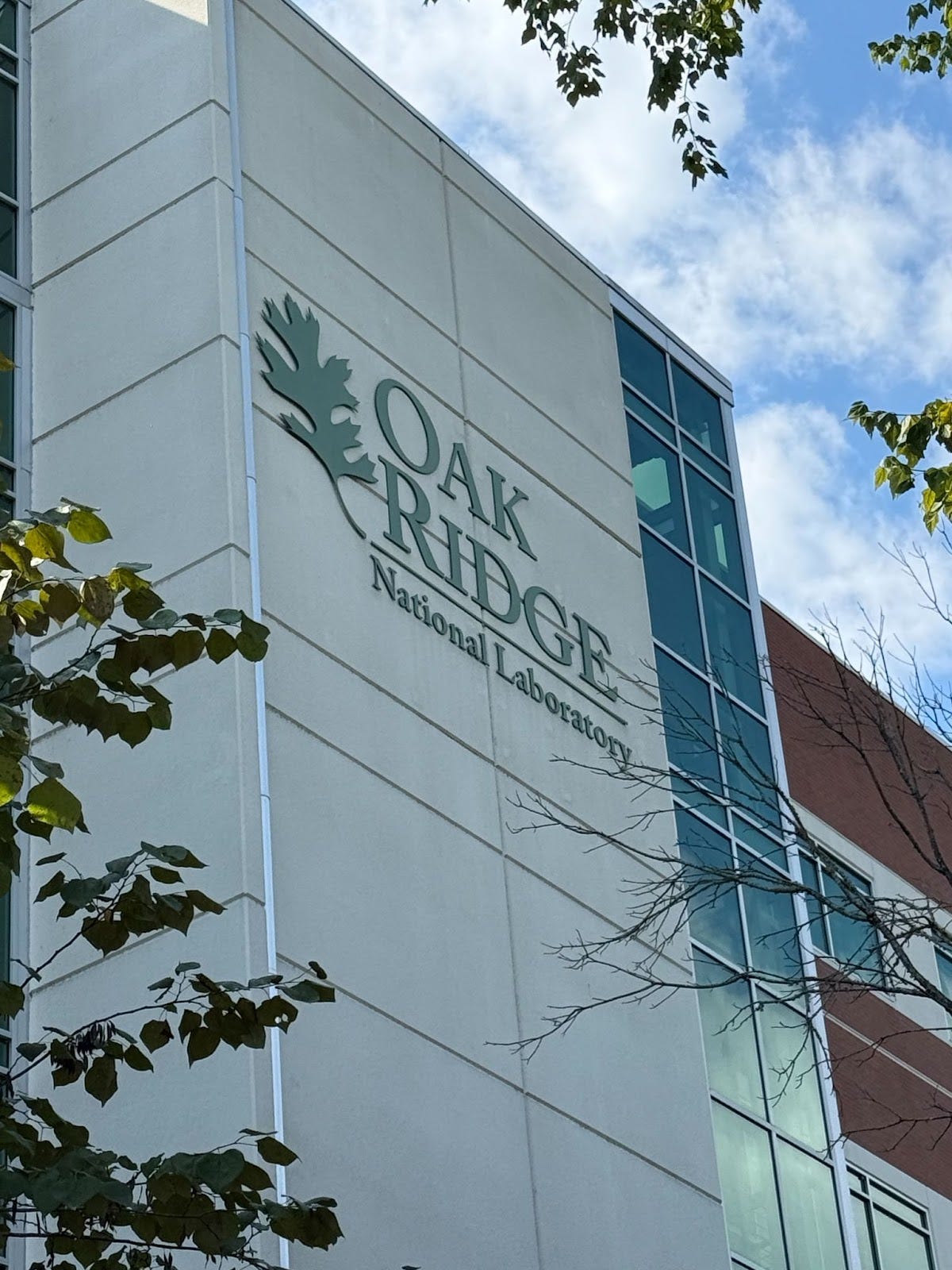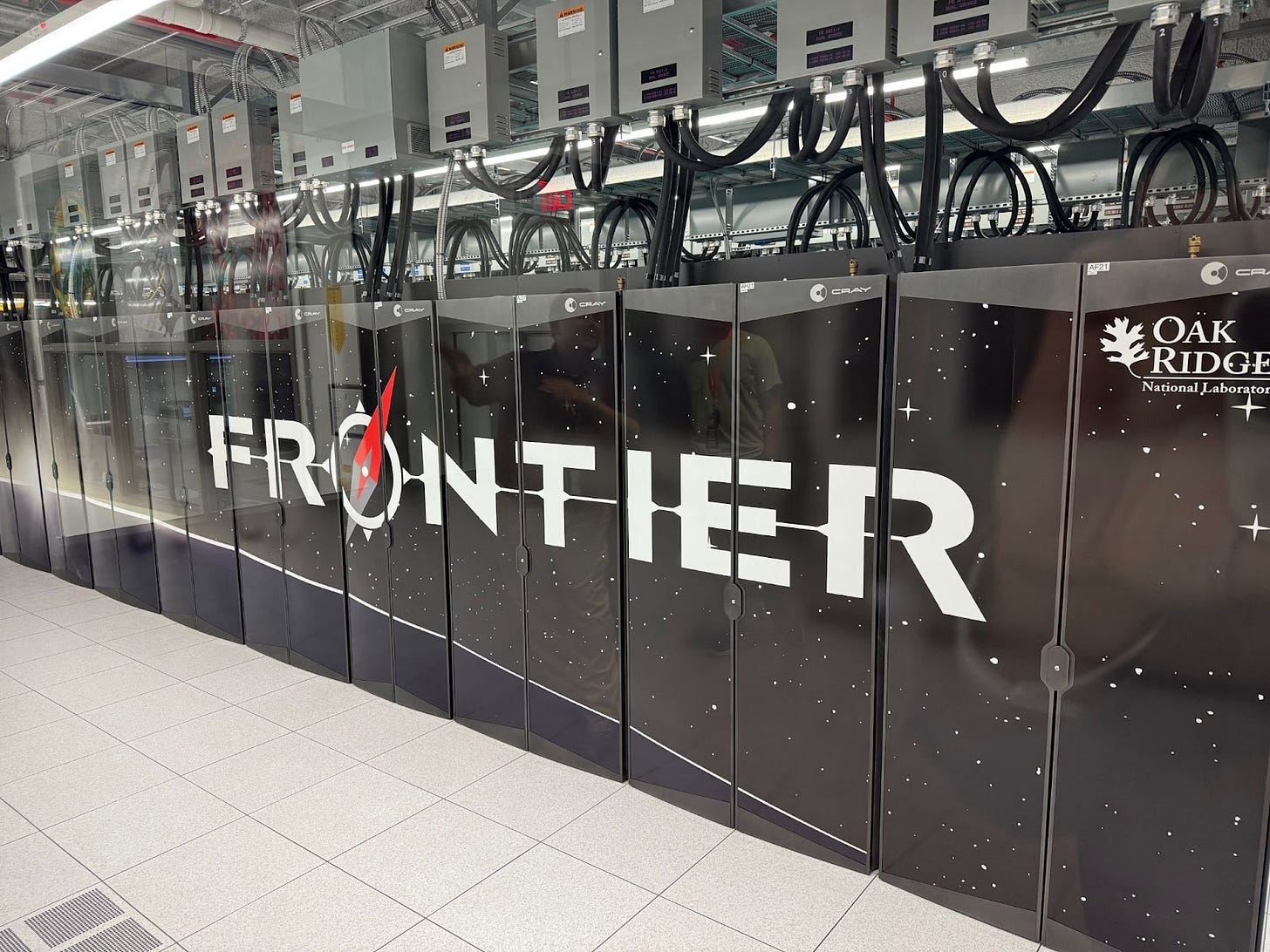Local Innovation, Global Impact: Insights from a Visit to the University of Tennessee-Knoxville and Oak Ridge National Laboratory
Hello, I’m Ylli Bajraktari, CEO of the Special Competitive Studies Project. In today’s edition of our newsletter, PJ Maykish, Ryan Carpenter, and Nicholas Furst discuss their recent trip to the University of Tennessee-Knoxville (UTK) and Oak Ridge National Laboratory (ORNL). Through a series of high-level meetings and workshops, they explored the critical role of technology, workforce development, and innovation in maintaining U.S. economic competitiveness on the global stage.
📌 SCSP Events on the Horizon
October 23 - SCSP’s second AI+ summit, the AI+ Robotics Summit, will take place in Washington, D.C. Sign up for our waitlist here!
November 1 - The Ash Carter Exchange in Boston, MA. Join the waitlist here!
November 15 - SCSP x AGI House Hackathon: SCSP is partnering with the Bay Area AI hacker house, AGI House, to host an AI Agents for Gov Hackathon @SCSP’s office in DC. Come create the future of AI agents to solve important real-world challenges. Stay tuned for more details!
Local Innovation, Global Impact: Insights from a Visit to the University of Tennessee-Knoxville and Oak Ridge National Laboratory
We are taking our NatSecTech program on the road, visiting universities across the country to engage with students, faculty, and local innovators. The goal of each trip is to ensure that the next generation of leaders understands emerging technological trends and the stakes of the techno-economic competition with China.
Last week, we traveled to the University of Tennessee-Knoxville (UTK) and Oak Ridge National Laboratory (ORNL). These are critical hubs for cutting-edge research, technological innovation, and talent development, all of which the United States needs in order to maintain its competitive edge in the global techno-economic landscape.
UT-Knoxville is home to a wide range of programs focused on emerging technologies, such as artificial intelligence and advanced energy systems. Additionally, UTK's strong connections with ORNL position it as a unique academic partner for addressing some of the most pressing challenges in science and technology.
Key Themes from the Trip
1. Serious research is being done to make scalable fusion energy a reality.
Our discussions at ORNL centered on the lab’s fusion energy research, particularly in materials science and advanced manufacturing. ORNL’s capabilities include facilities for testing material layering options for fusion machine walls, optimizing cooling channels, and leveraging 3D printing technologies. The lab also uses exascale computing to run simulations and model fusion systems, and its neutron science capabilities can simulate the effects of neutron bombardment in fusion systems. While ORNL is advancing fusion research, challenges remain, such as the absence of a tritium facility, which is essential for fusion reactions. Additionally, lengthy contracting processes hinder collaboration between ORNL and private companies.
At UTK, discussions focused on the timeline for scaling fusion energy to the electrical grid. We spoke with experts who emphasized that, while fusion companies focus heavily on fusion machine development, the broader material science life cycle required to design and maintain fusion plants is crucial. Power companies will need to see sustained fusion machine operations and maintenance cycles before fully committing to fusion energy. The importance of advanced materials, erosion rates, and machine modeling was highlighted, with the belief that cleaner fission reactors will serve as a necessary bridge to achieving commercial fusion. Advancements in magnet technology are especially crucial for bridging the gap to bring fusion energy to the grid.
2. Restructuring the U.S. National Security Enterprise for the Globalized AI/Information Eras.
Two scholars made the case that the Cold War was driven by aerospace science and that today’s competition with the Axis of Disruptors – China, Russia, Iran, and North Korea – will hinge on information science (i.e., the combination of AI, cyber, computing, networks, and information strategy).
Another who participated in the National Security AI Workshop argued that the entire national security enterprise is fundamentally mismatched with the changes brought by digital technology, which advantages authoritarian regimes through increased, inexpensive range-and-reach capabilities that can damage our Cold War-era national security structure.
Relatedly, information technology favors the authoritarians. According to one of the researchers present, “All the things authoritarian regimes can do in the ICT world are easier for them to do in the Information Communication and Computation Technology (ICCT)/Web 2.0 world.” Moreover, “America should begin to see information as the ‘air’ in national security. Further, in the AI era, we should see information as crucial to world politics itself.” The United States needs one clean organizational approach to match the new tech-geopolitical mash up.
Our discussions reinforced our belief that the U.S. national security framework, built during the Cold War, is not equipped to handle the challenges posed by AI, cyber threats, and information warfare. There's a pressing need for organizational innovation equivalent to the Cold War’s combatant command structure to address these emerging threats.
3. Education is adapting to meet new market demands.
The College of Emerging and Collaborative Studies (ECS) at the University of Tennessee-Knoxville is taking a forward-thinking approach to higher education. ECS is leading an initiative to develop customizable and stackable undergraduate degrees and certificates, allowing students to design personalized educational paths. This model allows students to design their own educational paths that lead to degrees including a B.S. in Data Science, a B.S. in Applied Artificial Intelligence, or a B.S. in Innovative Transdisciplinary Studies. This approach personalizes the learning experience and equips students with the skills needed to excel in rapidly evolving, interdisciplinary fields.
4. A story of high-performance computing
At ORNL, we had the opportunity to see Frontier, the world’s fastest supercomputer, and learn about the upcoming decommissioning of Summit, which once held that same title. Summit, with over 200,000 CPU cores and a $200M price tag, was the pinnacle of high-performance computing just five years ago. However, its capabilities are already outdated, and it is scheduled to go offline in November. Supercomputing technology’s rapid progress reminds us of the incredible speed at which advancements are being made and the constant need to evolve in order to maintain national capabilities.
Our visit illustrated not only the impressive scale and power of these machines but also the high stakes involved in staying ahead in the global race for computational superiority. High-performance computing is critical for solving some of the world's most complex problems – from scientific research and AI development to national security and energy innovation. As technology continues to advance at breakneck speeds, the decommissioning of Summit highlights the ongoing challenge of ensuring that national research facilities remain at the cutting edge, continuously pushing boundaries to keep the United States at the forefront of global innovation.
Conclusion
Our visit to UTK and Oak Ridge National Laboratory underscored the critical role that universities and research institutions play in advancing U.S. competitiveness on the global stage. UTK serves as a microcosm of the innovation ecosystem thriving at U.S. universities, where scientific breakthroughs are being made every week. Engaging with leading experts, students, and innovators provided deeper insights into these evolving fields, demonstrating the incredible potential that exists within academia.
To fully harness and organize this energy for global competition, the U.S. Government must tap into the collective innovation happening at institutions like UTK. By building robust collaborative networks of experts and fostering organizational innovation, we can channel the power of these academic and research hubs into a coordinated national effort. This approach is key to meeting the demands of a rapidly changing technological landscape and ensuring the United States remains agile, competitive, and ready to lead in the face of global challenges. U.S. universities are already incubating the talent and ideas necessary to make the next wave of breakthroughs; the challenge now is to harness and organize that potential effectively.









https://cvent.me/VBnRGY?sms=7&cn=jmcaeGnLT1yCk5eChC4TqQ
The idea of using a "Liqwido CPU/GPU coolant" in combination with micro-nano crystalline structures is intriguing and could lead to significant advancements in cooling high-performance processors. Liquid cooling is already used to manage heat in modern GPUs and CPUs, but combining it with advanced crystalline materials could optimize heat transfer even further, providing more efficient thermal management and potentially allowing for higher clock speeds or more sustained performance.
Micro-nano crystalline structures could enhance the coolant's ability to absorb and dissipate heat by increasing surface area or improving thermal conductivity at the microscopic level. This could lead to better cooling systems that extend the life of processors while boosting their performance.
Would you like to explore how such a system could be designed or focus on potential materials for the crystalline structures?